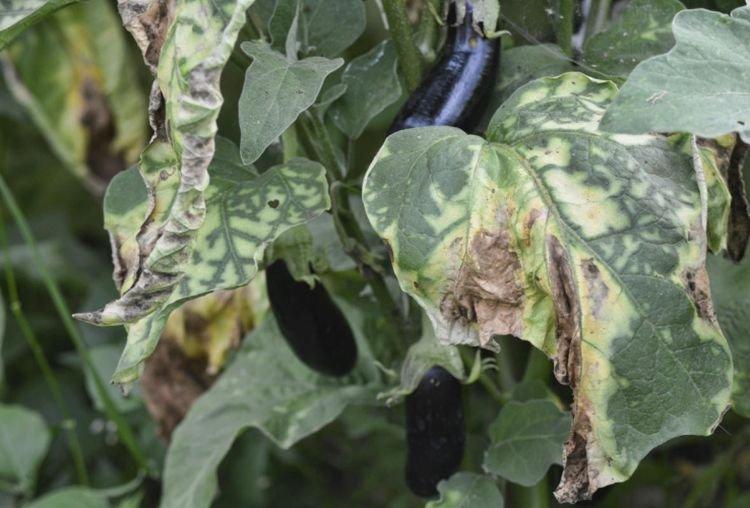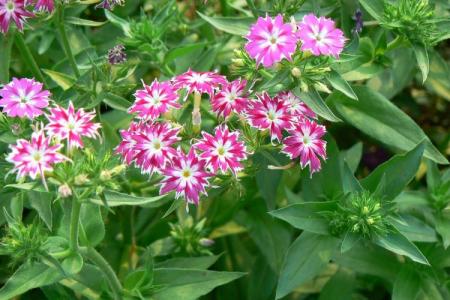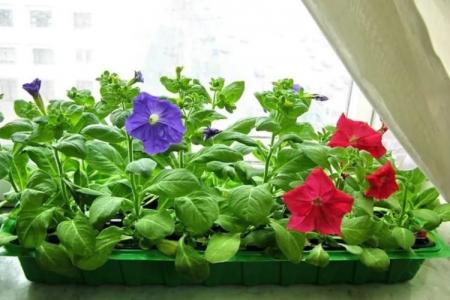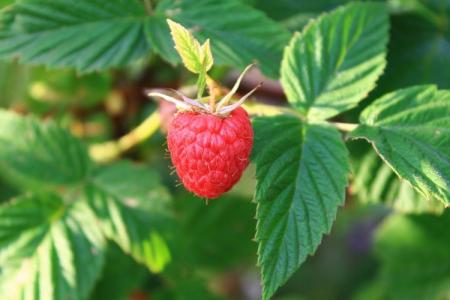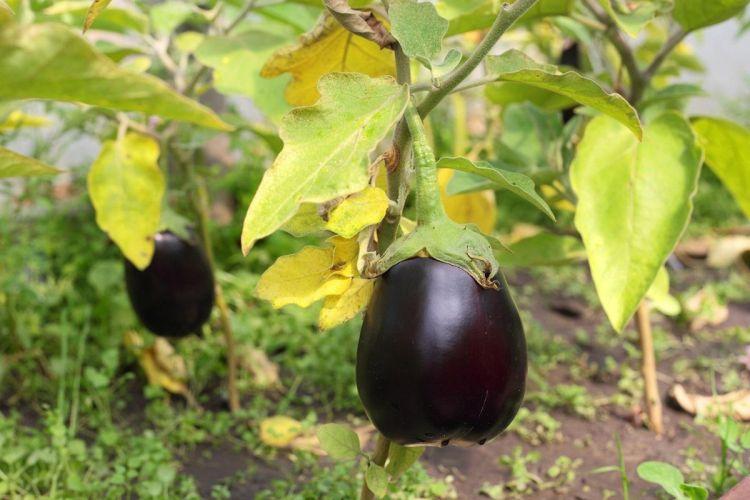
Trace elements in eggplant improve memory, stabilize blood pressure, activate the heart and reduce the risk of strokes. But even such a valuable vegetable is not immune from its own diseases and infections. Very often, the leaves suffer first, so treat them carefully!
Bumps and bumps on the leaves
Eggplant leaves are often covered with small "rashes" due to stress. But the reasons can lie much deeper, so it is important to recognize them correctly!
- Aphids, scale insects and weevils from neighboring berry plantations leave tubercles on the leaves when they equip eggplant clutches;
- Small light green bumps resembling a rash are called oedema. These are dropsies that form due to inappropriate conditions;
- The same oedema appears due to stress after transplanting eggplants, freezing or other external factors;
- When the seedlings began to grow in tubercles after transplanting into the greenhouse, this is a consequence of the temperature difference. This happens when the air is still cool and the ground in the greenhouse is warm;
- Rough tumors and ulcers spread to all parts of the eggplant due to a rare but deadly bacterial cancer.

Leaves turn yellow and dry
When, at the height of the season, the leaves begin to turn yellow and dry, as if suddenly deep autumn has come, eggplants need emergency support. We tell you about the most common reasons!
- Leaves dry due to lack of moisture, but this is not a reason to overflow the garden. Due to constant dampness, eggplants and other plantings also deteriorate and turn yellow, because they begin to rot;
- Small dry spots on healthy leaves - sunburn. This is a common situation after rainfall, daytime watering and spraying;
- From below, the leaves turn yellow due to lack of nutrition, because the plant seeks to preserve more promising shoots;
- The seedlings are very sensitive and may freeze after a night on the balcony or due to poor hardening. And the first manifestation of the problem is yellowing and drying leaves. But if everything is in order with the root system and the consequences are not too serious, the eggplants will recover on their own;
- When the leaves turn yellow clearly between the veins, and the veins themselves turn red, the eggplants have little iron or sulfur. It is almost impossible to pinpoint the missing element, so use balanced feeding;
- Usually the leaves turn yellow from below, but if the upper young plates are affected first, this is mycoplasmosis. Its second indirect symptom is darkening veins;
- Mosaic is a terrible virus that cannot be cured and affects almost all plants on the site. Because of her, the leaves are covered with chaotic patterns and stains.
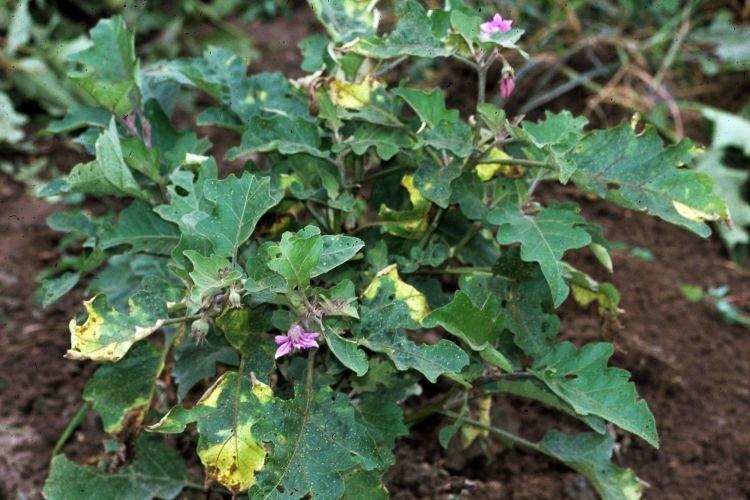
Brown spots on eggplant leaves
Leaf spots are orange, dirty yellow, brown, and even purple or red. Most often, the problem is either in the fungus, or in the deficiency of certain microelements.
- When late blight captures the beds of nightshades, then over time, brown spots disperse along the leaves;
- In case of cladosporium disease, a velvety bloom is visible on the back of the spots;
- Due to nematodes, eggplant leaves are covered with chaotic dirty yellow and brown spots, and the shoots are bent;
- If ulcers gradually form at the site of the affected areas, it is a matter of bacterial spotting;
- Brown spots quickly darken to almost black when the eggplant is destroyed by the brown spot.
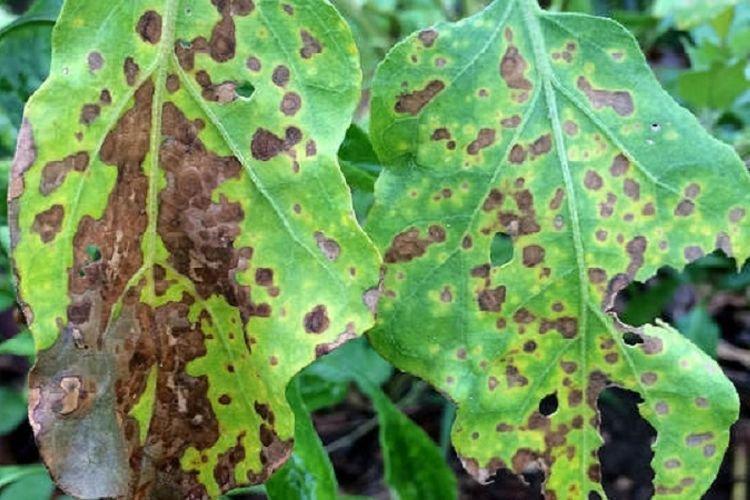
Eggplant leaves turn black
Due to severe bacterial infections, the leaves become so dark that they appear almost black. Sometimes it is rot or damage to the root system - you need to sort it out as soon as possible!
- Black dots on the leaves, which gradually turn into large necrotic foci - a sign of alternaria;
- If a green halo spreads around the black spots, and the middle is white at the same time, the eggplants suffer from cercosporosis;
- Sensitive young seedlings can turn black and wither due to serious agricultural violations.
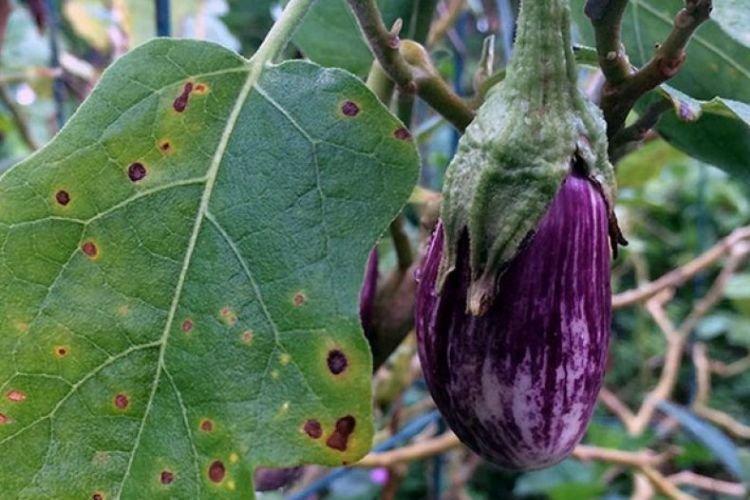
White bloom on eggplant leaves
Whitish bloom on leaf plates is fungal spores or thin sticky cobwebs. Both problems are inherent not only to eggplants, but to absolutely any garden crops.
- Powdery mildew leaves a white velvety bloom on the leaves, which spreads not only through the eggplants, but throughout the entire area;
- Downy mildew is very similar, which differs only in the pathogen. You don't even need to delve into the nuances, because the drugs for the treatment are the same;
- A thin web entwines leaves and stems on which spider mites have settled and settled down;
- Sometimes gray mold leaves faded spots on bright leaves. Gradually, they soften, bloom and become even larger.
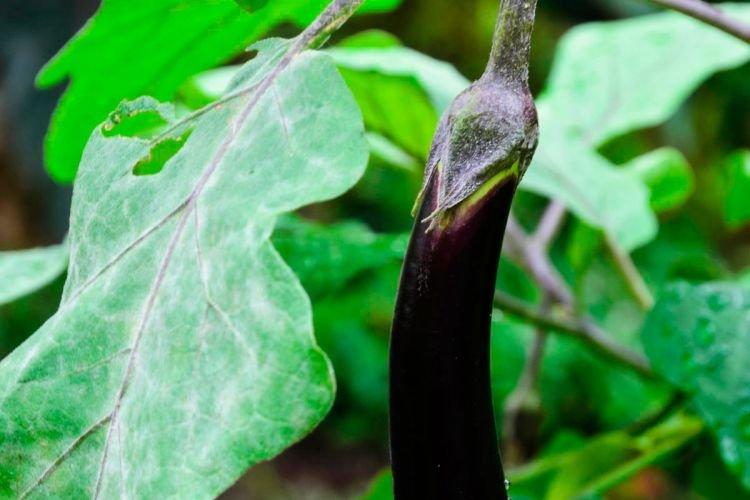
Pale and light leaves
When outwardly healthy leaves seem to fade - urgently adjust the conditions and care. If you manage to do everything on time and the eggplants do not have time to catch any associated diseases, they will quickly recover!
- During a set of deciduous mass, eggplants need a lot of nitrogen, otherwise they will be faded and weak;
- Leaves fade and wither if they lack manganese or other trace elements. It is difficult to find the exact cause, therefore we recommend ready-made complex feeding;
- Eggplants can brighten in violation of agricultural technology, and in particular - a stable temperature and humidity regime. This is especially true for less seasoned greenhouse beds;
- Chaotic white streaks on green leaves cause some types of mosaic. But the result is the same - it is still poorly understood and untreated.
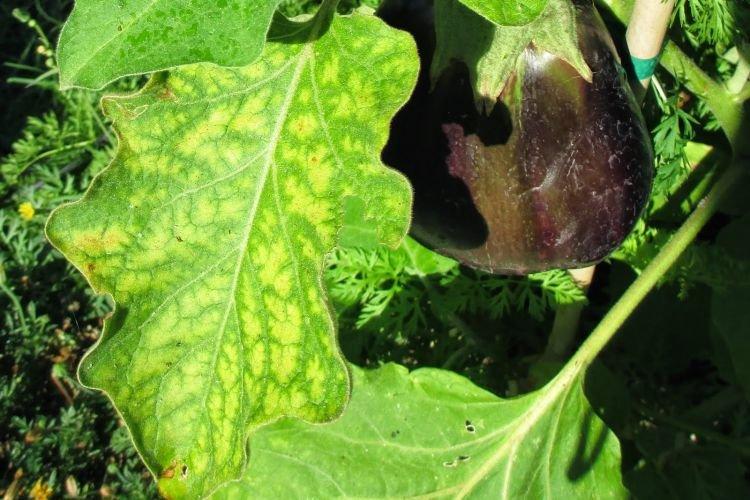
Eggplant leaves curl
Eggplant leaves shrink, curl and deform as the plant tries to maintain its strength. Occasionally it happens in a dangerous virus, so be careful!
- If the beds are too thick, the leaves wrinkle and curl, because they do not have enough air;
- With verticillary wilting, eggplant leaves dry and curl up, but do not completely crumble;
- If the leaves are deformed from the base, then the eggplant lacks boron. And if from the ends - most likely, this is a calcium deficiency;
- Curly is rarely seen on eggplants, but it is this that leads to shredding and death of the beds.
